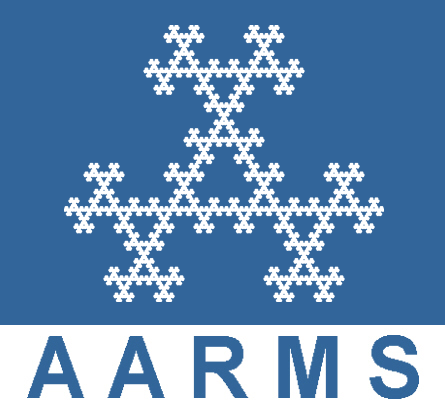Réunion d'hiver SMC 2016
Niagara Falls, 2 - 5 décembre 2016
Org: Alexander Bihlo (Memorial University) et Andy Wan (McGill University)
[PDF]
- WERNER BAUER, Imperial College London, Department of Mathematics
Variational integrators for anelastic and pseudo-incompressible flows [PDF]
-
The anelastic and pseudo-incompressible equations are two well-known soundproof approximations of compressible flows useful for both theoretical and numerical analysis in meteorology, atmospheric science, and ocean studies. In this talk we derive and test structure preserving numerical schemes for these two systems. The numerical schemes are based on a finite dimensional approximation of the group of volume preserving diffeomorphisms and are derived via a discrete version of the Euler-Poincar\'e variational formulation of the anelastic and pseudo-incompressible systems.
The resulting variational integrators allow for a discrete version of Kelvin circulation theorem, are applicable to irregular meshes and exhibit excellent long term energy behavior. We then report a series of tests for these models on regular and irregular meshes with strongly deformed cells. In the benchmark test of hydrostatic adjustment we verify that the models correctly represent the dispersion relations. We further show that these schemes correctly capture the Kelvin Helmholtz instability. Finally, on the rising and falling bubble test cases we illustrate the models' accurate representation of advection dominated processes. For these test cases and grid types, these variational models show excellent long time energy conservation.
This is a joint work with Fran\c{c}ois Gay-Balmaz (Laboratoire de M\'et\'eorologie Dynamique, \'Ecole Normale Sup\'erieure/CNRS, Paris, France).
- ALEXANDER BIHLO, Department of Mathematics and Statistics, Memorial University of Newfoundland
Well-balanced mimetic mesh-based and meshless schemes for the shallow-water equations with bottom topography [PDF]
-
We formulate a general criterion for the exact preservation of the lake at rest solution in general mesh-based and meshless numerical schemes for the strong form of the shallow-water equations with bottom topography. The main idea is a careful mimetic design for the spatial derivative operators in the momentum flux equation that is paired with a compatible averaging rule for the water column height arising in the bottom topography source term. We demonstrate the well-balanced property numerically using finite difference and RBF-FD schemes in the one- and two-dimensional case. This is joint work with Scott MacLachlan.
- JULIENNE KABRE, Illinois Institute of Technlogy
An Energy-Preserving Discretization for the Poisson-Nernst-Planck Equations [PDF]
-
The Poisson-Nernst-Planck (PNP) equations have recently been used to describe
the dynamics of ion transport through biological ion channels besides being widely
employed in semiconductor industry.
This work is about the design of a numerical scheme to solve the PNP equations that preserves exactly (up to roundoff error) a discretized form of the energy dynamics of the system.
The proposed finite difference scheme is of second-order accurate in both space and time.
Comparisons are made between this energy dynamics preserving scheme and
a standard finite difference scheme, showing a difference in satisfying the energy law. Numerical results are presented for validating the orders of convergence in both time and space of the new scheme for the PNP system.
- ARTUR PALHA, Eindhoven University of Technology
High order mimetic discretizations [PDF]
-
In this work we will present the High Order Mimetic Discretization Framework and discuss two fundamental aspects for the construction of structure-preserving discretizations: (i) the definition of the discrete degrees of freedom of physical field quantities, and (ii) the formulation of the physical field laws.
For the first, we will introduce geometric degrees of freedom, which are associated to geometric objects (points, lines, surfaces and volumes), and then establish their relation to differential forms. It will be shown that we can construct discrete polynomial function spaces of arbitrary degree associated to these geometric degrees of freedom. These function spaces constitute a discrete de Rham complex:
\[ \mathbb{R}\longrightarrow V^{0}_{h}\subseteq H(\nabla,\Omega) \overset{\nabla}{\longrightarrow} V^{1}_{h}\subseteq H(\nabla\times,\Omega) \overset{\nabla\times}{\longrightarrow} V^{2}_{h}\subseteq H(\nabla\dot,\Omega)\overset{\nabla\cdot}{\longrightarrow} V^{3}_{h}\subseteq L^{2}(\Omega)\rightarrow 0\,. \]
In this way it is possible to exactly discretize topological equations even on highly deformed meshes. All approximation errors are included in the constitutive equations, which are encoded in the Hodge-$\star$ operator. This leads to discretizations that exactly preserve the divergence free constraint of velocity fields in incompressible flow problems and of magnetic fields in electromagnetic problems, for example.
For the second, the Navier-Stokes equations will be used as an example and we will show that although at the continuous level all equivalent formulations are equally good, at the discrete level, the choice of a particular formulation has a fundamental impact on the conservation properties of the discretization.
These ideas will be applied to the solution of: e.g. Poisson equation, Maxwell eigenvalue problem, Darcy flow, fusion plasma equilibrium and Navier-Stokes equations.
- ERICK SCHULZ, McGill University
Convergence of Discrete Exterior Calculus [PDF]
-
Discrete exterior calculus (DEC) is a structure-preserving discretization of exterior calculus put forward by N. Hirani and his collaborators. By using simplicial complexes from algebraic geometry and the connection between a triangulation and its dual, DEC preserves key geometric structures of differential forms that are important for computation. Applications of DEC include problems from homology, Riemannian geometry, fluid dynamics and discrete mechanics, such as variational problems in computer vision and animation. However, establishing a convergence theory for DEC remains an open problem. We will share recent advancements for boundary value problems on 0-forms and discuss the main difficulties in extending these results to higher-order forms and approximations.
- ARI STERN, Washington University in St. Louis
Multisymplectic HDG methods [PDF]
-
For Hamiltonian ODEs, symplectic numerical integrators exhibit superior numerical performance in a global sense. For Hamiltonian PDEs, a suitable numerical method should be "multisymplectic" — but what does this mean? We answer this question using the "unified framework" of Cockburn et al. for hybridizable discontinuous Galerkin (HDG) methods, which turns out to be particularly well-suited to this problem. Specifically, we give necessary and sufficient conditions for an HDG method to be multisymplectic, and we examine these criteria for several popular methods.
(Joint work with Robert McLachlan, Massey University, New Zealand.)
- GANTUMUR TSOGTGEREL, McGill University
Approximation properties of finite element exterior calculus [PDF]
-
In this talk, we will discuss characterizations of various approximation classes for finite element exterior calculus in terms of classical smoothness spaces such as Besov spaces. This is an ongoing work joint with Alan Demlow.
- FRANCIS VALIQUETTE, State University of New York at New Paltz
Symmetry-Preserving Numerical Schemes [PDF]
-
Most important differential equations from mathematical physics admit Lie point symmetries which reflect physical properties of the system of equations. It is therefore desirable to preserve these symmetries when discretizing such equations. In my presentation I will explain how to construct symmetry-preserving numerical schemes using the novel method of equivariant moving frames, and we will explore numerical implementations of these schemes.
- ANDY WAN, McGill University
Conservative methods and long-term stability for dynamical systems [PDF]
-
The multiplier method was recently introduced as a general conservative discretization to preserve conservation laws of ODEs and PDEs. In particular, the multiplier method is applicable even for systems without a symplectic or variational structure, such as dissipative problems. In this talk, we apply the multiplier method to first order ODEs and systematically construct conservative schemes for a variety of dynamical systems. Moreover, we discuss a fundamental result on the long-term stability of conservative methods.
This is joint work with A. Bihlo (Memorial University at Newfoundland) and J.-C. Nave (McGill University).





